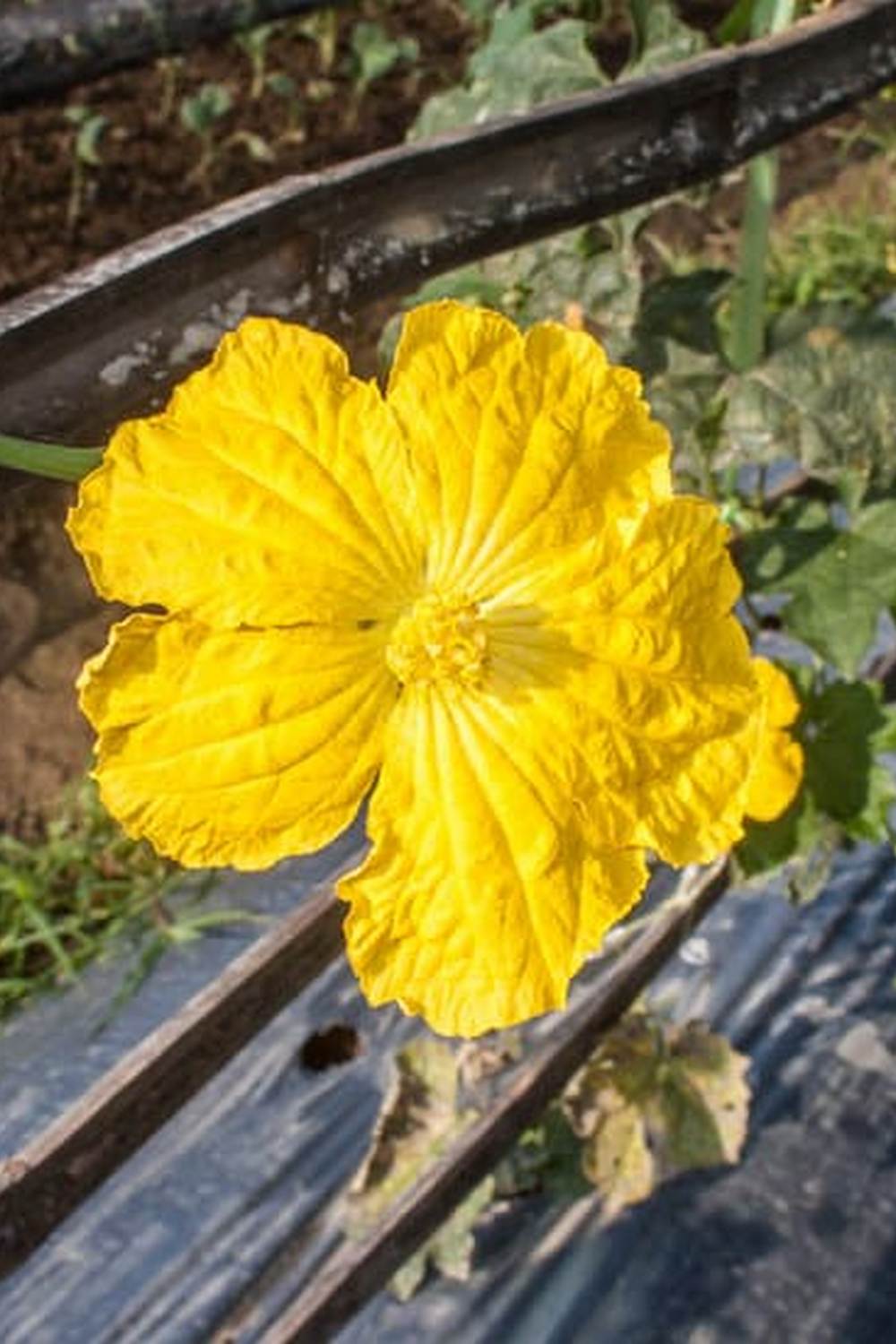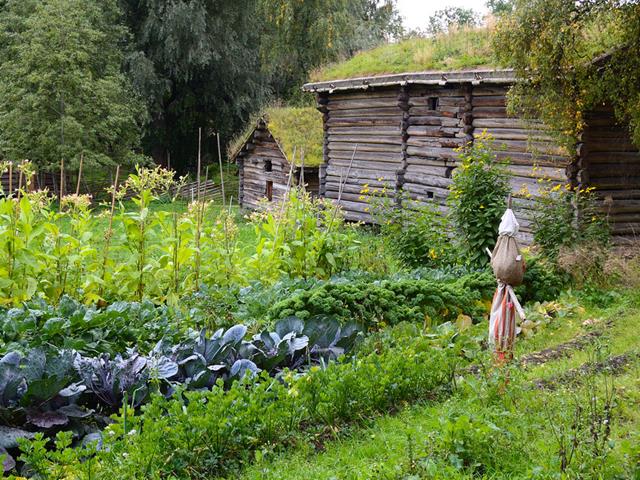Zone 5 Clay Saline Water Vegetable Gardening presents a unique set of challenges for gardeners in this region. The combination of clay soil and saline water can make cultivating a successful vegetable garden seem daunting. However, with the right knowledge and techniques, it is possible to thrive in this environment.
Gardening in Zone 5 with clay soil can lead to issues such as poor drainage and compacted soil, while saline water poses a risk of salt buildup that can harm plants. Understanding these challenges is crucial in order to overcome them and create a flourishing garden.
In this article, we will delve into the specifics of Zone 5 Clay Saline Water Vegetable Gardening, including how to select the right vegetables, prepare the soil, manage watering and irrigation effectively, plant and maintain your garden, as well as strategies for pest and disease control. By following these guidelines, you can turn your Zone 5 garden into a bountiful oasis of fresh produce.
Understanding the Challenges of Gardening in Zone 5 With Clay Soil and Saline Water
Zone 5 presents a unique set of challenges for vegetable gardening, particularly when dealing with clay soil and saline water. Understanding these challenges is crucial to successful gardening in this specific zone. Clay soil tends to be heavy and compacted, making it difficult for roots to penetrate and access essential nutrients. Additionally, saline water can have harmful effects on plant growth by increasing soil salinity levels.
Impact of Clay Soil on Plant Growth
Clay soil has poor drainage, which can lead to waterlogged conditions that suffocate plant roots and promote fungal diseases. It also tends to compact easily, making it hard for plants to establish deep root systems. This can result in stunted growth and reduced nutrient uptake, affecting the overall health and productivity of your vegetable garden.
Effects of Saline Water on Plants
Saline water contains high levels of salts, such as sodium chloride, which can damage plant roots and interfere with their ability to absorb water and nutrients. When plants are unable to take up enough water, they may exhibit symptoms of salt stress like leaf burn, wilting, or slowed growth. To mitigate the negative impact of saline water on your vegetable garden, proper irrigation techniques and soil amendments are essential.
Selecting the Right Vegetables for Zone 5 Clay Saline Water Gardening
When it comes to vegetable gardening in Zone 5 with clay soil and saline water, selecting the right vegetables is crucial for a successful harvest. Not all plants thrive in these conditions, so choosing varieties that are more tolerant to challenges such as poor drainage and high salt content is essential.
Vegetables Suitable for Clay Soil
Some vegetables that perform well in clay soil include root crops such as carrots, radishes, and potatoes. These vegetables can penetrate through the heavy clay and develop properly. Other suitable options are brassicas like cabbage, broccoli, and Brussels sprouts, which can handle the compacted nature of clay soil.
Vegetables Tolerant to Saline Water
In areas with saline water, it is important to choose vegetables that can tolerate or even thrive in these conditions. Vegetables like asparagus, spinach, Swiss chard, and tomatoes are known to be more tolerant to salty water. Additionally, herbs like rosemary, sage, and thyme can also withstand some salt content in the irrigation water. Selecting these vegetables will help ensure a bountiful harvest despite the saline water challenges you may face in Zone 5.
Diversifying Your Garden
To maximize your chances of success in Zone 5 clay saline water vegetable gardening, consider diversifying your garden with a variety of vegetables. This not only adds visual appeal but also helps protect against potential pest infestations and diseases that may affect specific plant types. By carefully selecting an assortment of suitable vegetables for your unique growing conditions, you can create a thriving garden that yields a delicious harvest.
Soil Preparation and Amending Techniques for Clay Soil in Zone 5
When it comes to vegetable gardening in Zone 5 with clay soil and saline water, proper soil preparation and amending techniques are crucial for success. Clay soil can be dense and compacted, making it difficult for plants to establish healthy root systems and access nutrients.
Saline water, on the other hand, can lead to salt build-up in the soil, which can harm plant growth. By following the right steps to improve your soil quality, you can create a thriving garden in Zone 5.
To effectively prepare your clay soil for vegetable gardening in Zone 5, consider the following techniques:
- Soil Testing: Before making any amendments to your soil, conduct a soil test to determine its pH level and nutrient content. This will help you identify deficiencies that need to be addressed.
- Adding Organic Matter: Incorporating organic matter such as compost, aged manure, or leaf mold into your clay soil can improve its structure, drainage, and nutrient retention. Aim to add a generous amount of organic matter each year to enhance the overall health of your garden.
- Tilling and Aeration: To break up compacted clay soil, regularly till the garden beds using a garden fork or mechanical tiller. Aeration techniques like core aeration can also help loosen the soil and promote better root growth.
In addition to improving clay soil quality, it is essential to address the challenges posed by saline water in Zone 5 gardens:
- Leaching: To prevent salt buildup in the soil from saline water irrigation, practice regular leaching by applying excess water to flush out accumulated salts. Be sure to monitor moisture levels in the soil carefully to avoid overwatering.
- Using Resistant Plants: Selecting vegetable varieties that are tolerant of saline conditions can help mitigate the negative effects of salty irrigation water on plant health. Look for cultivars known for their salt tolerance when planning your garden.
- Drip Irrigation Systems: Consider installing a drip irrigation system in your Zone 5 garden to deliver water directly to plant roots while minimizing evaporation and surface salt accumulation. This method can efficiently provide moisture without exacerbating saline issues.
By implementing these strategies for soil preparation and amending techniques tailored to clay soil and saline water conditions in Zone 5, you can set your vegetable garden up for success and enjoy a bountiful harvest at the end of the growing season.
Watering and Irrigation Tips for Saline Water in Zone 5 Gardens
When it comes to vegetable gardening in Zone 5 with clay soil and saline water, proper watering and irrigation techniques play a crucial role in the success of your garden. Saline water can be harmful to many plants, as excess salt can hinder their ability to absorb water and essential nutrients. In addition, the heavy clay soil commonly found in Zone 5 can lead to poor drainage, making it even more important to water effectively.
To ensure healthy plant growth in Zone 5 clay saline water vegetable gardening, here are some watering and irrigation tips to keep in mind:
- Utilize drip irrigation: Drip irrigation is a great option for delivering water directly to the roots of plants while minimizing evaporation and reducing the risk of salt build-up on the surface of the soil.
- Monitor soil moisture levels: Invest in a soil moisture meter to regularly check the moisture levels at different depths in your garden. This will help you determine when it’s time to water and avoid over or under-watering your plants.
- Use rainwater when possible: To reduce the impact of saline water on your plants, consider collecting and using rainwater for irrigation purposes. Rainwater is typically low in salts compared to tap or well water.
By implementing these watering and irrigation tips tailored for saline water conditions in Zone 5 gardens, you can help your vegetable plants thrive despite the challenges posed by clay soil and salty irrigation water. Remember that proper watering is essential for healthy growth and high yields, so be attentive to your garden’s specific needs throughout the growing season.
Planting and Maintenance Guide for Vegetable Gardening in Zone 5
Planting and maintaining a vegetable garden in Zone 5 with clay soil and saline water can be challenging but with the right approach, it can thrive. When planting your vegetables, it is essential to consider the specific conditions of your garden.
For clay soil, choose plants that are known to tolerate or even thrive in such conditions. Vegetables like carrots, potatoes, and cabbage are good options for clay soil as they have strong root systems that can penetrate the dense soil.
In terms of maintenance, regular care is crucial for the success of your vegetable garden in Zone 5. Keep an eye on the moisture levels of the soil, especially when dealing with saline water. Saline water can affect plant growth by hindering nutrient uptake due to high concentrations of salt.
To mitigate this issue, consider watering deeply but less frequently to leach out excess salts from the soil. Additionally, mulching can help regulate soil temperature, retain moisture, and reduce salt buildup.
Proper spacing of plants is also important in vegetable gardening in Zone 5 with clay soil and saline water. Overcrowding can lead to competition for nutrients and sunlight, resulting in stunted growth or poor yields. Follow the recommended spacing guidelines for each type of vegetable you are growing to ensure optimal growth and productivity.
Regular weeding is necessary to prevent competition between weeds and your vegetable plants for nutrients and resources. By following these planting and maintenance guidelines, you can maximize the potential of your vegetable garden in Zone 5 despite its challenging conditions.
| Vegetables Suitable for Zone 5 Clay Soil | Recommended Spacing |
|---|---|
| Carrots | 1-2 inches apart |
| Potatoes | 12-15 inches apart |
| Cabbage | 18-24 inches apart |
Pest and Disease Management Strategies for Zone 5 Clay Saline Water Gardens
Pest and disease management is a crucial aspect of successful vegetable gardening in Zone 5 with clay soil and saline water. The unique challenges posed by these conditions make it essential for gardeners to be proactive in protecting their crops. One effective strategy is to choose pest-resistant vegetable varieties that are well-suited to the specific conditions of the area. Additionally, practicing good crop rotation can help reduce the risk of diseases taking hold in the soil.
When it comes to managing pests, manual removal can be an effective method for smaller infestations. For larger pest problems, organic solutions such as neem oil or insecticidal soap can be used. It’s important to closely monitor plants for any signs of pests or diseases so that action can be taken promptly to prevent further damage. Utilizing row covers or netting can also help protect vulnerable plants from common garden pests.
In terms of disease management, ensuring proper spacing between plants can promote good air circulation and reduce the risk of fungal diseases. Mulching with materials like straw or shredded leaves can help maintain soil moisture levels and prevent splashing onto plant leaves which can lead to diseases.
If disease does occur, removing and disposing of affected plant parts is crucial to prevent further spread within the garden. By implementing these strategies along with regular observation and maintenance practices, gardeners in Zone 5 can effectively manage pests and diseases in their clay saline water vegetable gardens.
| Pest/Disease Management Strategy | Description |
|---|---|
| Choose Pest-Resistant Varieties | Select vegetable varieties that are known to be resistant to common pests in Zone 5 clay saline water gardens. |
| Organic Pest Control | Use natural solutions like neem oil or insecticidal soap to manage pest infestations without harming beneficial insects. |
| Proper Spacing and Mulching | Maintain adequate space between plants and utilize mulch to reduce the risk of fungal diseases spreading. |
Harvesting and Enjoying the Fruits of Your Labor
Successfully navigating the challenges of gardening in Zone 5 with clay soil and saline water requires dedication, patience, and a strategic approach. From selecting the right vegetables to implementing proper soil preparation and watering techniques, every step plays a crucial role in ensuring a bountiful harvest. By understanding the unique characteristics of your zone and making informed choices, you can overcome obstacles and create a thriving garden oasis.
One of the key factors in achieving success with vegetable gardening in Zone 5 clay saline water conditions is selecting the appropriate crops that are well-suited to these challenging environmental factors. Opting for vegetables that are tolerant of clay soil such as root crops like carrots, beets, and potatoes can set you up for a productive growing season.
Additionally, choosing vegetables that are less sensitive to saline water like tomatoes, peppers, and squash can help mitigate potential issues with irrigation.
In conclusion, by following the guidelines provided for Zone 5 clay saline water vegetable gardening, you can transform your garden into a flourishing haven of fresh produce. With careful planning, diligent maintenance, and proactive pest management strategies, you can enjoy a successful harvest year after year. Embrace the unique opportunities that Zone 5 presents for vegetable gardening and savor the satisfaction of enjoying the fruits of your labor straight from your own backyard.
Frequently Asked Questions
What Vegetables Grow Well in Wet Clay Soil?
Vegetables that grow well in wet clay soil include plants like lettuce, kale, broccoli, and cabbage. These vegetables have shallow root systems that can thrive in the moisture-retaining properties of clay soil.
What Do You Mix With Clay Soil for a Vegetable Garden?
To improve clay soil for a vegetable garden, you can mix in organic matter such as compost, aged manure, or peat moss. Adding coarse sand or perlite can help with drainage and aeration, making it easier for roots to penetrate the soil.
What Vegetables Are Salt Water Tolerant?
Some vegetables are tolerant of saltwater conditions, including sea kale, samphire (also known as sea asparagus), and arrowhead plant. These plants have adapted to thrive in coastal environments where salt levels are higher than normal.

If you’re looking to get into vegetable gardening, or are just looking for some tips on how to make your current garden better, then you’ve come to the right place! My name is Ethel and I have been gardening for years. In this blog, I’m going to share with you some of my best tips on how to create a successful vegetable garden.





